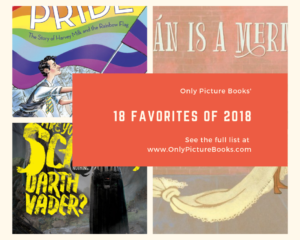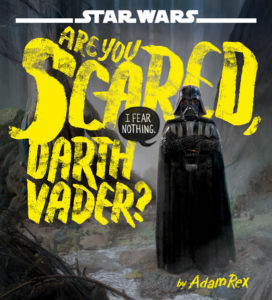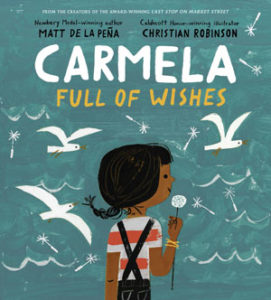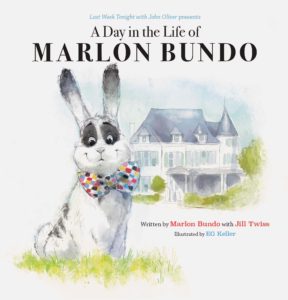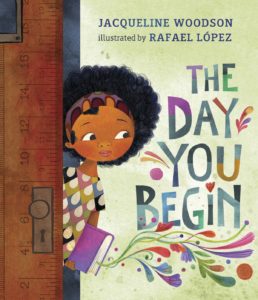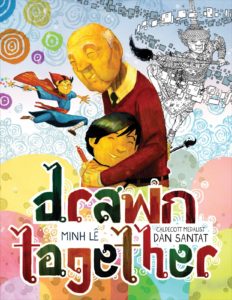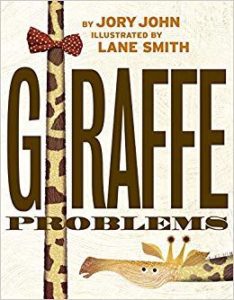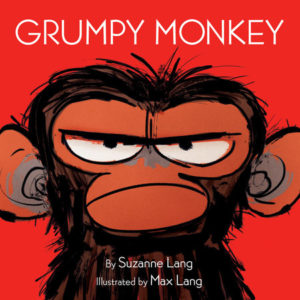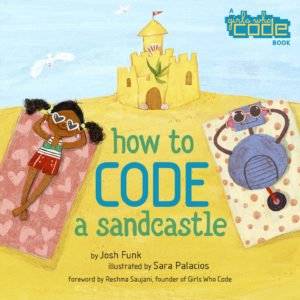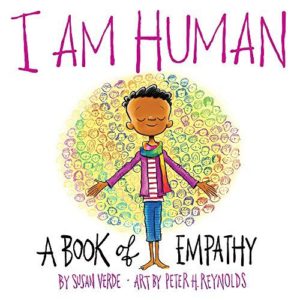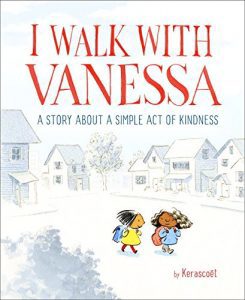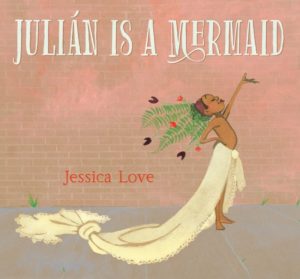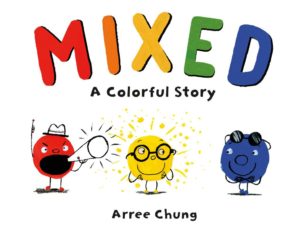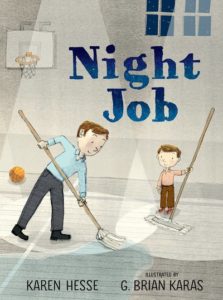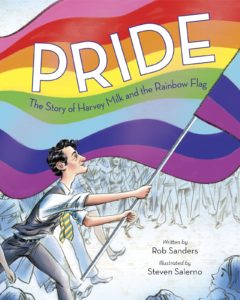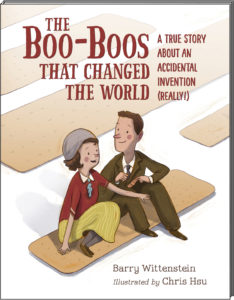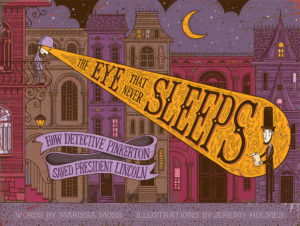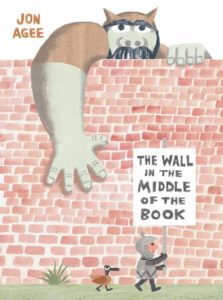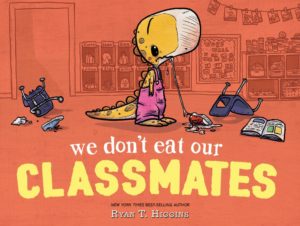 Matt Forrest Esenwine recently had the opportunity to catch up with two friends he’s known for many years: authors Josh Funk and Paul Czajak. All three began their children’s lit careers around the same time and have watched and supported each other ever since.
Matt Forrest Esenwine recently had the opportunity to catch up with two friends he’s known for many years: authors Josh Funk and Paul Czajak. All three began their children’s lit careers around the same time and have watched and supported each other ever since.
The three of them recently caught up via video and spent an hour chatting about their careers, the craft of writing, and some of the pitfalls they’ve encountered along their publishing journey. Some of their choice comments are shared here; if you’d like to watch the entire video, just click THIS LINK!
 Paul, on getting into the industry: “You get this idea, you have no idea what to do with it…but I did hook up with a critique group…and they were the ones who hooked me up with SCBWI [Society of Children’s Book Writers and Illustrators]. So I went there not knowing anything, as to what to expect.”
Paul, on getting into the industry: “You get this idea, you have no idea what to do with it…but I did hook up with a critique group…and they were the ones who hooked me up with SCBWI [Society of Children’s Book Writers and Illustrators]. So I went there not knowing anything, as to what to expect.”
“But I found the workshops were amazing, and it just really lit a fire under me to really get into this craft.”
Matt, on networking at conferences: “We’re all in this together – the editors, the agents, the authors, the illustrators. Everybody is working towards the goal of bringing great literature to kids. So once you realize that there’s not really a hierarchy – we’re all kid lit creators – once you realize that, the conferences can be much more enjoyable because you don’t feel any kind of intimidation.”
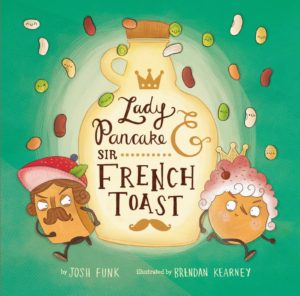 Josh, on his first manuscript’s success: “At the SCBWI conference that we met, I read a draft of a picture book called Lady Pancake & Sir French Toast and about 6–8 months later, after many critiques…I got an offer for that book. I also had a couple others that I had interest, one of them was…Dear Dragon, and another one I had interest from Scholastic, and all that together helped me get an agent.”
Josh, on his first manuscript’s success: “At the SCBWI conference that we met, I read a draft of a picture book called Lady Pancake & Sir French Toast and about 6–8 months later, after many critiques…I got an offer for that book. I also had a couple others that I had interest, one of them was…Dear Dragon, and another one I had interest from Scholastic, and all that together helped me get an agent.”
Paul, on his first manuscript: “Early on, especially with rhyming, you start in your own head, you’re forcing meter, you’re forcing rhyme, you’re forcing these rhythms and things like this – and it’s not until you get a little better at it that do you know that you’re doing that.”
 Josh, on landing his long-time agent: “I was fortunate that I had a bunch of things all come together at once. It was after that SCBWI conference that I sort of met the right people, and put my foot out there to try to volunteer for the next year’s SCBWI, and do a little more…I got critiques from Paul and your critique group and other people I’d met and I had three books kind of close to being acquired at the same time – all of them did – and all that together really helped me get an agent. Along with a personal reference from a friend of mine who I’d also met at that conference.”
Josh, on landing his long-time agent: “I was fortunate that I had a bunch of things all come together at once. It was after that SCBWI conference that I sort of met the right people, and put my foot out there to try to volunteer for the next year’s SCBWI, and do a little more…I got critiques from Paul and your critique group and other people I’d met and I had three books kind of close to being acquired at the same time – all of them did – and all that together really helped me get an agent. Along with a personal reference from a friend of mine who I’d also met at that conference.”
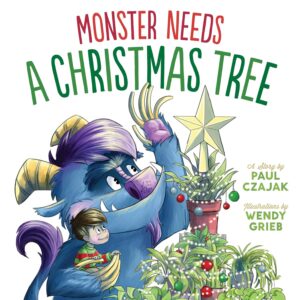 Paul, on getting – and losing – his agent: “Everything I sold to Mighty Media [the “Monster & Me” series] I sold myself…it wasn’t until I moved to New Jersey…I got an agent. He sold two books…but his tastes kind of changed. He wanted nothing to do with rhyme anymore. He signed me knowing my Monster series was rhyme, then all of a sudden he’s just like, “Yeah, rhyme’s not really selling, so really don’t bother.” I couldn’t send him anything that was rhyming. It’s not like I wrote solely in rhyme, I mean, the only rhyming books that sold were “Monster and Me.” But I do still like to rhyme…if it works in rhyme, that’s just, in my head, that’s the way it’s supposed to be written. I can’t put it into prose. It doesn’t work.”
Paul, on getting – and losing – his agent: “Everything I sold to Mighty Media [the “Monster & Me” series] I sold myself…it wasn’t until I moved to New Jersey…I got an agent. He sold two books…but his tastes kind of changed. He wanted nothing to do with rhyme anymore. He signed me knowing my Monster series was rhyme, then all of a sudden he’s just like, “Yeah, rhyme’s not really selling, so really don’t bother.” I couldn’t send him anything that was rhyming. It’s not like I wrote solely in rhyme, I mean, the only rhyming books that sold were “Monster and Me.” But I do still like to rhyme…if it works in rhyme, that’s just, in my head, that’s the way it’s supposed to be written. I can’t put it into prose. It doesn’t work.”
Josh & Matt, on the importance of using the right words – and spelling them correctly: There’s a line in [Lady Pancake & Sir French Toast] that was “Pancake rappels down a rope of linguini” and it’s interesting because Paul suggested the word “rappels”…in one of his critiques, and he spelled it not “rappelled” like I’m climbing down, but “repelled” like I pushed away. I didn’t notice it, I sent it off to publishers, it was acquired, THEY didn’t notice it – it didn’t get edited out until the copy editor got a hold of it!”
“But honestly, though, the copy editor wanted me to change the word. They were like, “a) you spelled it wrong, b) I think the word ‘rappelled’ is too advanced for a picture book.” And I tried to change it…you could say “climbed down,” but that’s too much mouth movement, and these are the kinds of things I think about when I’m writing…Pancake “slid” down? I don’t know.”
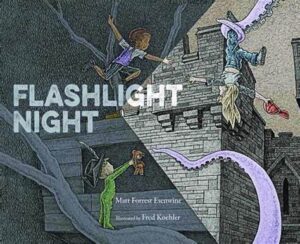 Matt: “It really couldn’t BE any other word. Speaking as someone who is all about poetry and word choice and that sort of thing…you’ve got the assonance [Matt’s note: I meant “consonance”, meaning the repetition of consonant sounds!] of the “R”’s and “L”s: She’s “RappeLLing down a Rope of Linguine.” The R and the L just tie the whole line together….it has to be that word. I mean, I have “mizzenmast in Flashlight Night!” If I can put “mizzenmast,” you can certainly have “rappel”!
Matt: “It really couldn’t BE any other word. Speaking as someone who is all about poetry and word choice and that sort of thing…you’ve got the assonance [Matt’s note: I meant “consonance”, meaning the repetition of consonant sounds!] of the “R”’s and “L”s: She’s “RappeLLing down a Rope of Linguine.” The R and the L just tie the whole line together….it has to be that word. I mean, I have “mizzenmast in Flashlight Night!” If I can put “mizzenmast,” you can certainly have “rappel”!
Josh: “The thing is, you’re seeing Lady Pancake climb down a rope of linguine.”
Matt: “It’s all about context.”
Josh: “Right…I asked my editor, “Can we say no?” This was my first book. “Can we say no to the copy editor?” My editor’s like, “Oh, yeah, of course you can!”
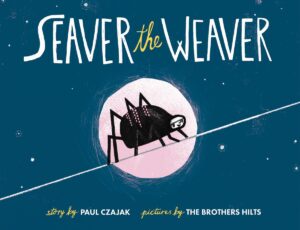 Paul, on his picture book Seaver the Weaver: “That’s a book about the orb spider, an orb spider who doesn’t want to do circular webs, he wants to do other geometric shapes…That one actually caught the eye of Jane [Yolen]. That’s like my own little claim to fame; it’s the one thing I pat myself on the back for! I got a direct message from Jane Yolen saying ‘this is a classic,’ so I thought that was better than anything.”
Paul, on his picture book Seaver the Weaver: “That’s a book about the orb spider, an orb spider who doesn’t want to do circular webs, he wants to do other geometric shapes…That one actually caught the eye of Jane [Yolen]. That’s like my own little claim to fame; it’s the one thing I pat myself on the back for! I got a direct message from Jane Yolen saying ‘this is a classic,’ so I thought that was better than anything.”
Matt, on the ups and downs of the industry: “Maybe three years ago…I was asked to write a book about a particular subject, I wrote the subject, they purchased the manuscript, they hired the illustrator, they got the whole thing done, .pdf is done, it’s ready to go to print…the parent company said, ‘Nah, I don’t think so.’ So it’s not a book until it’s a book.”
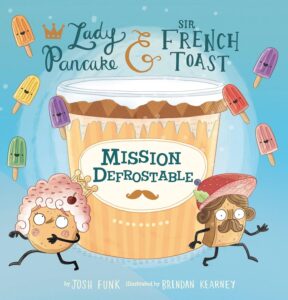 Josh, on keeping the “Lady Pancake” series fresh: “I like to change up the genre with each Lady Pancake & Sir French Toast book.”
Josh, on keeping the “Lady Pancake” series fresh: “I like to change up the genre with each Lady Pancake & Sir French Toast book.”
“The first one is a race, they’re racing for the last drop of syrup; the second one is called The Case of the Stinky Stench, which is a mystery; the third one is Mission: Defrostable, it’s an action-adventure spy thriller; the fourth one is called Short & Sweet where they shrink into tiny little kids and that one, it’s sort of like a sci-fi comedy mixed with a magical body swap…and then the fifth one is The Great Caper Caper, that is when the Evil Count Caper, the food, steals the light bulb and they have to break into his Las Veggies Casino to steal it back, so it’s a Las Veggies heist. And Attack of the Scones [due out this fall] is an alien invasion…it’s amazing I got away with doing all these silly, absurd things.”
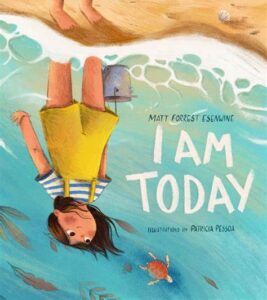 Matt, on not having a say in choosing illustrators: “I’ve never been unhappy with the illustrations an editor has chosen. Editors and publishers have far deeper pockets and a far bigger network from which to draw the talent than I ever could.”
Matt, on not having a say in choosing illustrators: “I’ve never been unhappy with the illustrations an editor has chosen. Editors and publishers have far deeper pockets and a far bigger network from which to draw the talent than I ever could.”
“I would never be able to get a Fred Koehler (ill. for Flashlight Night) or Patricia Pessoa – and with my book I Am Today, I wrote the text about…a young child kind of thinking about what they want to do, they recognize there’s a problem…they should be able to make a difference now. But Patricia created the entire plot of the book! The whole plot of my book was completely hers. She just used my words as a structure to create an entire narrative I had nothing to do with.”
Paul, on his “sort of new” Monster and Me book: “There was one story that [Might Media Press] purchased but never got published, never saw the light of day, and that’s Monster Needs to Go to School. And so just recently they cut a deal with Abdo Books, which deals a lot with libraries, and [the series] is getting new covers and a newfound life – and Monster Needs to Go to School is actually going to hit the shelves because of this.”
“Even though it sold years ago, it’s finally hitting the shelves now…it was illustrated, everything was done – they just never made it a book!”
Josh, on the difficulty of the market: “Picture books are hard…whether you’re writing in rhyme or not, they’re hard, but rhyme does make it sometimes a little trickier.”
“There’s the business aspect, that is like it’s just not likely to translate into other languages. If it’s a good enough story then it will, but you know, rhyme doesn’t translate…and there are some editors that are like, “Yeah, I just don’t do rhyme.” It’s because it’s hard to do it right, and there’s a stigma associated with it, and even if you do do it right – which I believe the three of us know how to – it does make it tricky. And so if it’s hard for me to sell a book in rhyme or my agent to sell a book in rhyme…it can be challenging.”
Matt, on time management, writing, and day jobs: “I still haven’t figured it out. I do voiceover work and am a stay-at-home dad, and so I have to fit everything wherever I can fit it. I wish I could have a structure; I don’t, really. I might be running errands when I would normally be writing or…if the kids have a late after school thing, well, I’ve got an extra hour of writing. But the next day is going to be tied up doing something else, or I’ve got a voiceover job I wasn’t expecting so now that has to take precedence – I never know what my day is going to look like.”
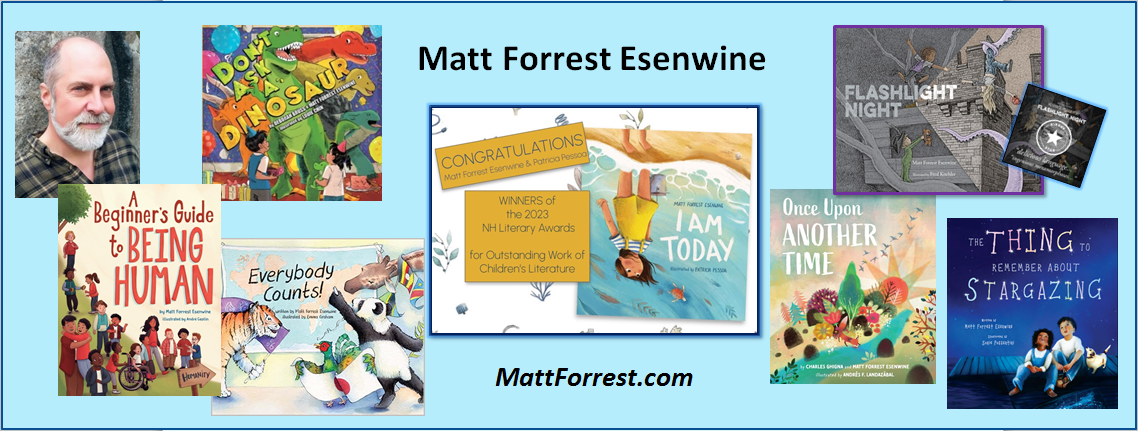
Paul (a chemist, by trade): “When I first moved to Jersey, I played the part of the stay-at-home dad…my wife had a great paying job, and we figured well, I’ll stay home and write, that way we don’t have to pay for child care…And the writing was fantastic, I had all the free time in the world, I was writing everything, you know? And decided to start novels and all sorts of things….I love staying at home with the kids, I wouldn’t give that up.”
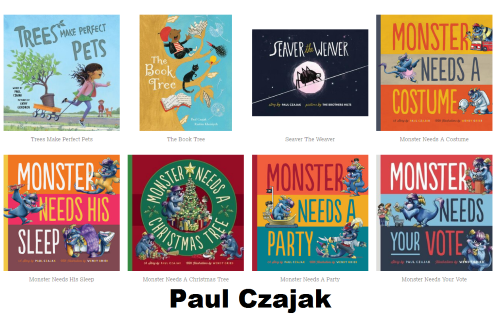
Josh (a software engineer/coder): “I’m married to a teacher, so she works like 80 hours a week, on average…so I have a lot of free time outside of when my wife is working in the evenings or on the weekends, so some of that time I spend with the kids…it’s the people who are teachers and writing – those are the ones that I don’t understand how they do it! But yeah, I mean I think that I have a 40-hour a week day job and my wife works twice as much.”
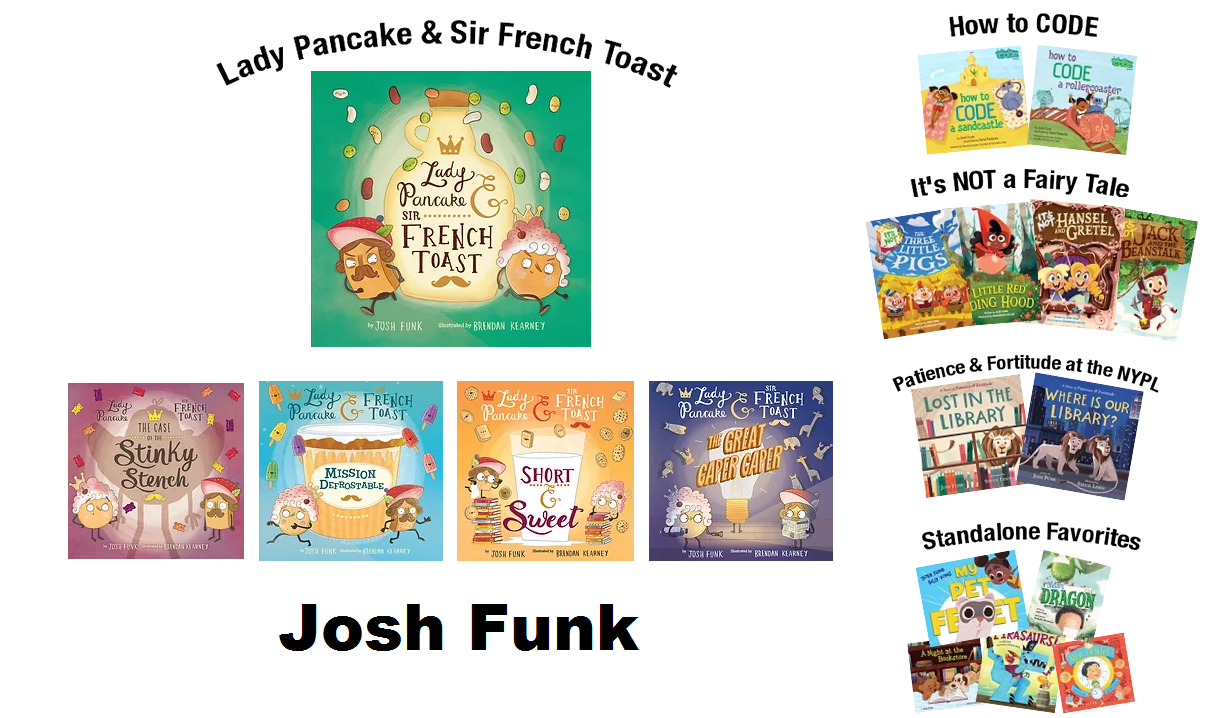
Josh, on the importance of timing: “There’s a book about tea party farts, and there’s a book about a giant poop party…it’s really about finding the right editor at the right time, as long as your story’s good enough.”


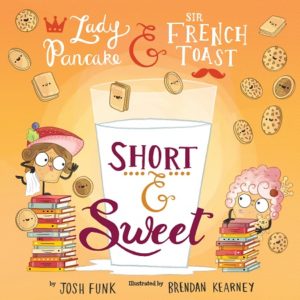
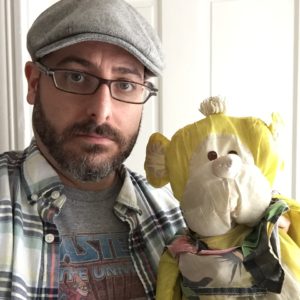
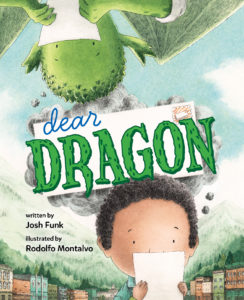

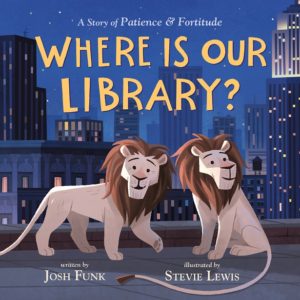
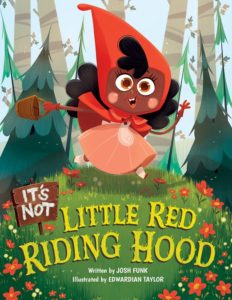 On that same day, the third book in the It’s Not a Fairy Tale series is being released:
On that same day, the third book in the It’s Not a Fairy Tale series is being released: 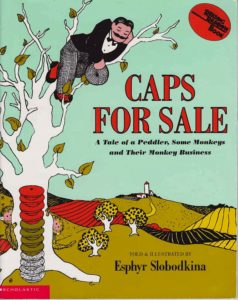
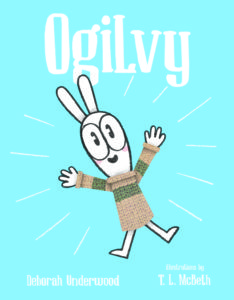
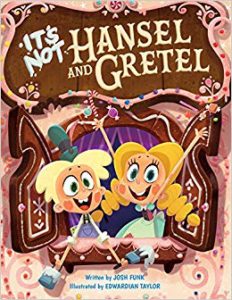
 David C. Gardner is an award-winning illustrator and visual development artist. A former artist for Walt Disney Animation Studios, he has illustrated numerous picture books, including his latest from Sleeping Bear Press,
David C. Gardner is an award-winning illustrator and visual development artist. A former artist for Walt Disney Animation Studios, he has illustrated numerous picture books, including his latest from Sleeping Bear Press, 